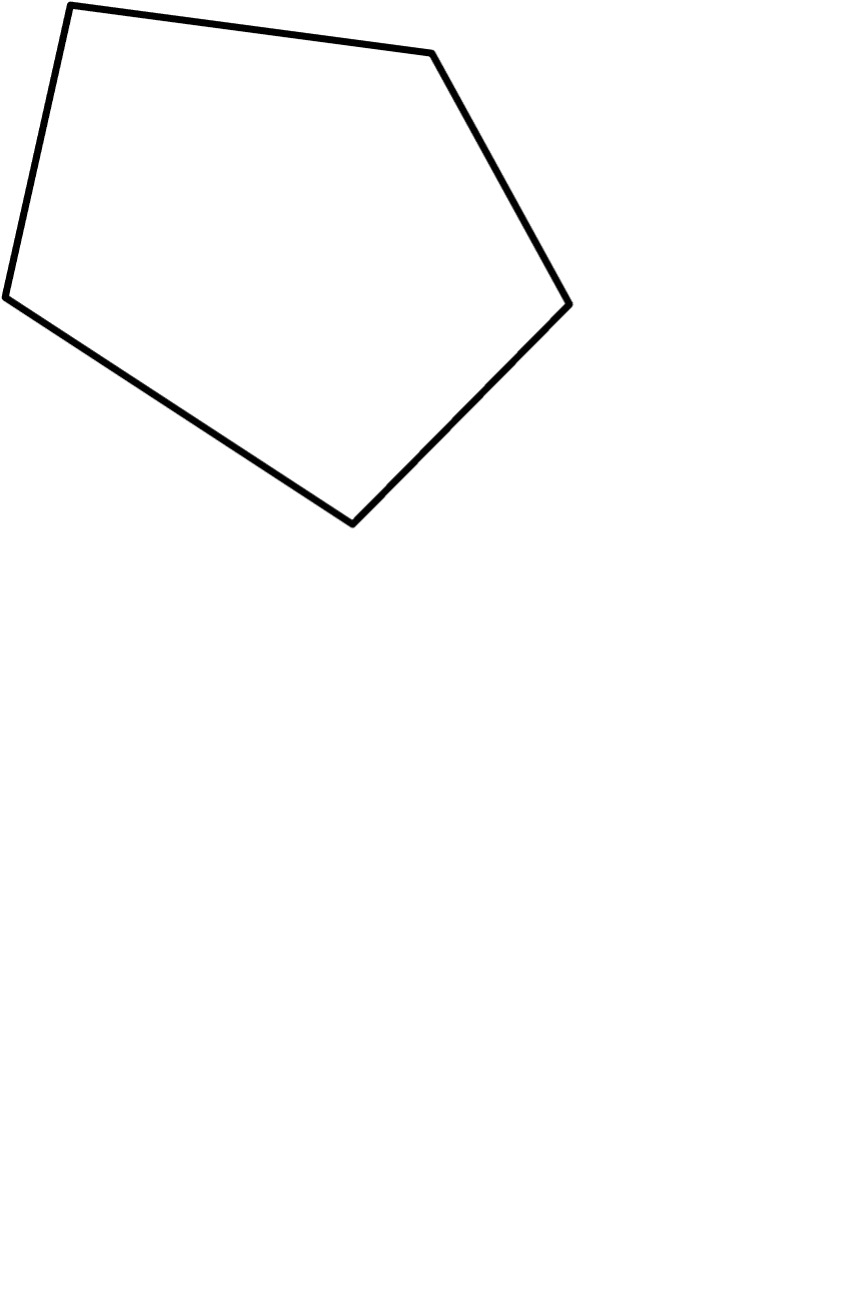Subsection 8.9.2 Reviewing the Idea
So far, we’ve shown straightforward examples of induction proofs of claims about integer arithmetic. But induction can do way more than that. Recall the basic idea. We’ve shown it again in this rock climbing picture. If we can get started, and if, having made one step, we can always make the next one, we can show that we can make any number of steps.

Big Idea
Mathematical induction is a powerful tool for proving that some property holds of natural numbers or anything that can be characterized by them.
Prove that, for n 1, if the plane is cut by n distinct lines, the interiors of the regions bounded by the lines can be colored with red and blue so that no two regions sharing a common line segment as a boundary will be colored identically.
Here’s an example that illustrates the idea. In this case, n = 5. To see whether you believe the claim, try adding one more line to the figure. Can you recolor it as required?
Here’s what happened when we did that:
To prove the claim, we start by clearly articulating P(n):
P(n) If the plane is cut by n distinct lines, the interiors of the regions bounded by the lines can be colored with red and blue so that no two regions sharing a common line segment as a boundary will be colored identically.
Basis step: P(1) is true since, if the plane cut by one line, two regions are formed. One may be colored red and the other blue. Thus the two regions are colored differently.
Inductive step: For n 1, we prove P(n) P(n+1).
Given the plane cut by n+1 distinct lines, select any one line and remove it. The plane is then cut by n distinct lines. By the inductive hypothesis, the interiors of the regions bounded by the lines can be colored with red and blue so that no two regions sharing a common line segment as a boundary will be colored identically.
Now reintroduce the n+1st line. Choose one side of that line. Reverse the color of all regions on the chosen side.
Consider any line segment s that corresponds to a boundary of some region we’ll call r. Then s must lie either on the n+1st line or one of the other n lines but not both since the lines are distinct.
If s lies on the n+1st line, then the n+1st line has cut across what was a larger region, which was thus divided into r and some other region t. The larger region previously had a single color. But the color on one side (but not the other) of the n+1st line (and thus s) has been flipped. So the two regions (r and t) on opposite sides of s must have different colors.
The other case is that s lies on one side or the other of the n+1st line. (It can’t cross the n+1st line because, if it did, it would be two separate boundary segments.) Since the regions on either side of s previously had different colors, they still do because, after the introduction of the n+1st line, either they were both unchanged or they were both reversed.
In both cases, the interiors of the regions bounded by the n+1st line can be colored with red and blue so that no two regions sharing a common line segment as a boundary will be colored identically.
So, by the principle of Mathematical Induction, our claim is true.
Exercises Exercises
1.
1. Prove by induction that, for n ≥ 3, the sum of the interior angles of a convex polygon of n vertices is (n – 2)⋅π. Recall that a convex polygon is a polygon every one of whose interior angles is less than π (180°).
Consider:


(A) (B)
(A) is convex. (B) isn’t, because of the angle labeled λ. It is an inside angle, but it is larger than 180°.
The first step in writing our proof should be a clear articulation of P(n). Write one.
The next step is the base case. What value of n should be used for the base case?
Now write your proof that P holds of the base case.
Now write your proof of the inductive step. You must prove:
For n ≥ 3, if P(n) then P(n+1).
2.
Prove that, for n ≥ 1, \((\sum_{i = 1}^{n}{\ (4i - 3)) = n(2n - 1)}\text{.}\)
Start by writing an explicit statement of P(n).
Base case. Prove it.
Induction step: Write out the specific claim that we must prove.
Now write out the proof.
3.
Prove that, for n ≥ 1, the product of any n odd integers is odd.
We need to start by writing an explicit statement of P(n). Before we can do that, we need to define a notation for products. We’ll use this:
\(\prod_{i = 1}^{n}{f(i)}\) is the product, as i goes from 1 to n, of f(i).
Π is to multiplication what Σ is to addition.
So let oi be the ith odd number in some arbitrary list of odd numbers. (Note that they don’t have to come in order: 1, 3, 5, … . Our claim applies to any n odd numbers.) Then:
\(\prod_{i = 1}^{n}o_{i}\) is the product of the n odd numbers in the given list.
Using this notation, write a definition of P(n).
Base case. Prove it.
Induction step: Write out the specific claim that we must prove.
Write out the proof of the inductive step.
4.
This problem is interesting, but harder than most of the ones we’ve done. We suggest that you try it, but do not get worried if you’re not sure you’ve got it.
Define the harmonic numbers hi, for i ≥ 1 as:
hi = \(1 + \frac{1}{2} + \ \frac{1}{3} + \ldots + \ \frac{1}{i}\)
Or, using summation notation, we can say:
hi = \(\sum_{j = 1}^{i}\left( \frac{1}{j} \right)\)
These numbers have been studied for hundreds of years, as has the infinite harmonic series:
\(1 + \frac{1}{2} + \ \frac{1}{3} + \frac{1}{4} + \ \frac{1}{5} + \ldots\)
The harmonic series does not converge to any fixed value. As i grows, so does hi, although it does grow very slowly. In this problem, we’ll use mathematical induction to prove that this is so. To do that, we’ll prove a claim about the harmonic numbers hk, where k is a power of two. Specifically:
For any integer n ≥ 0, \(h_{2^{n}\ }\)≥ 1 + \(\frac{n}{2}\)
First, you may want to convince yourself that this claim is believable. Write out the values of \(h_{2^{0}}\text{,}\) \(h_{2^{1}}\text{,}\) and \(h_{2^{2}}\text{.}\)
Let n = 2. What is \(h_{2^{n}}\) (i.e., h4) to 2 decimal places?
To check our claim, what is 1 + \(\frac{n}{2}\) ? (n is still 2.)
So, at least in the case of n = 2, we have that \(h_{2^{n}\ }\)≥ 1 + \(\frac{n}{2}\text{.}\)
Now on to our proof. Write out an explicit statement of the proposition P that we are trying to prove.
Base case: Prove P(0).
Induction step: We need to prove:
(\(h_{2^{n}\ }\)≥ 1 + \(\frac{n}{2}\)) → (\(h_{2^{n + 1}\ }\)≥ 1 + \(\frac{n + 1}{2}\))
Write this proof.

